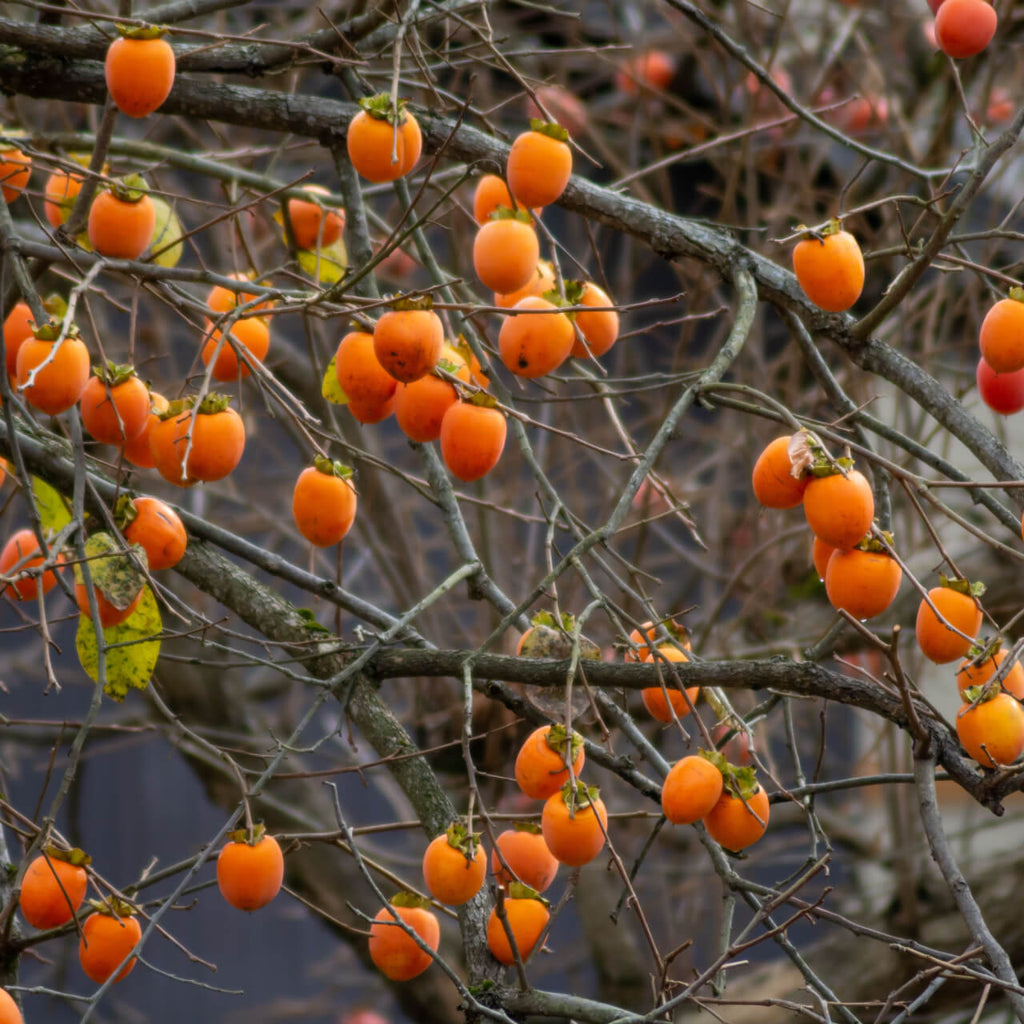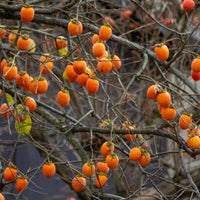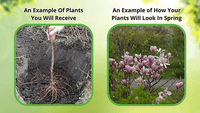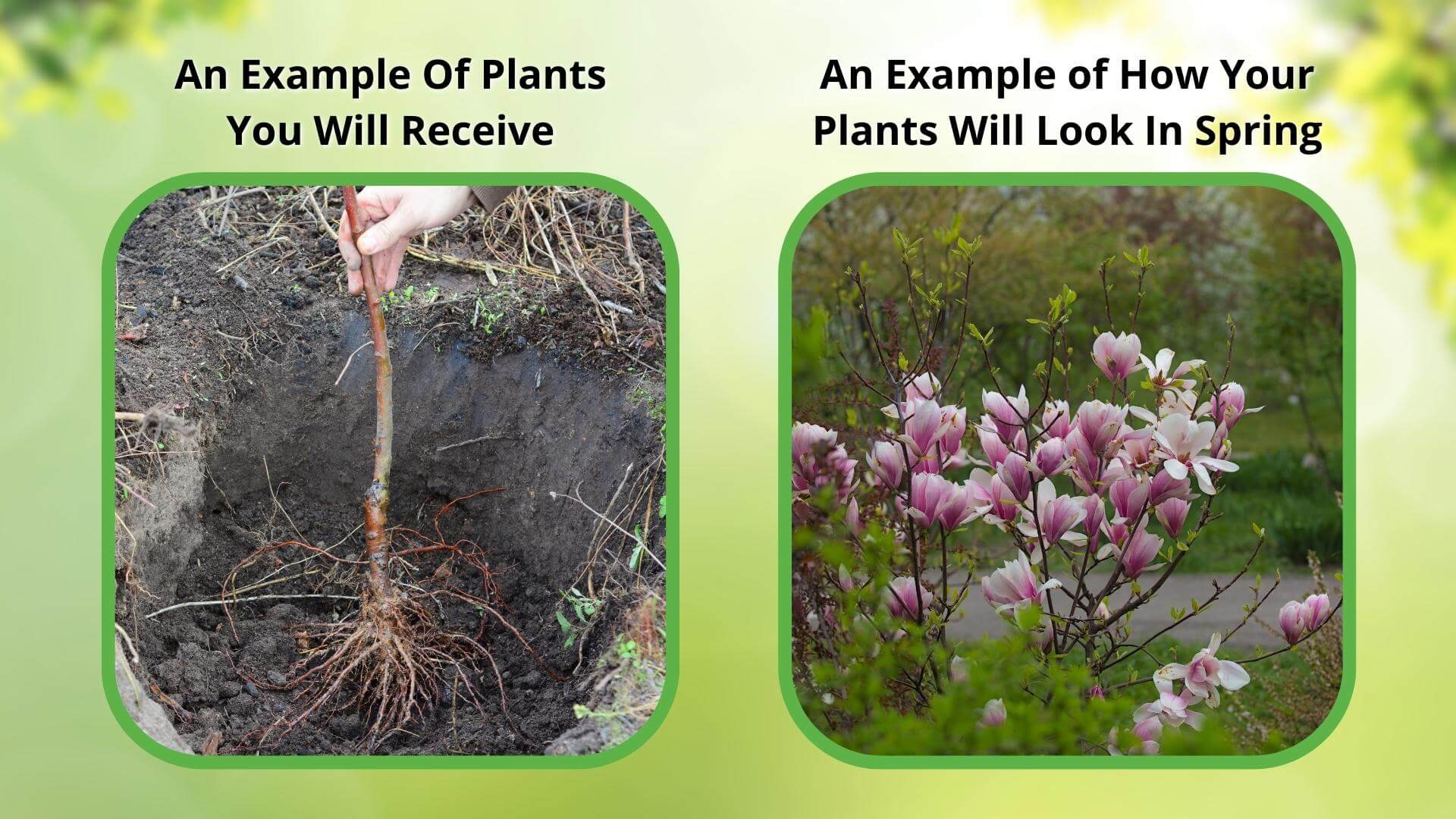



Couldn't load pickup availability
🌸When you add 1 plant to cart, it automatically adds the free one
Fruiting Persimmon Tree- Diospyros Virginiana
The Persimmon is a common fruit, widely regarded as a gem for its delicate, sugary sweet flavor. However, two types of Fruiting Persimmon Trees bear this fruit. The Japanese Persimmon Tree and the American Persimmon Tree are native to the southeastern United States.
Persimmons are a rather polarizing fruit because they are extremely soft when ready to eat–too soft to be sold at markets or in stores without bruising. But they are utterly perfect in a garden where they can be picked and eaten within minutes.
Fruiting Persimmon Tree Details
Family: Ebenaceae
Light Requirement: Full sun, partial sun
Water Needs: Moderate
Height: 30-80 ft
Spread: 20-35 ft
Growth Rate: Moderate
Soil Preference: Clay soil
Season of Interest: Spring/Summer, Fall
Flower Color: Gold/Yellow
Fruit: Persimmons
Wildlife Value: Mammals, birds, insects, Honeybees
Notable Characteristics of Fruiting Persimmon Trees
This low-growing, shrub-like tree has a mass of interwoven branches that make a lush canopy of foliage. Its leaves are oval-shaped and long, with a glossy, dark green finish. The bark is thick and dark grey with deep grooves; a somewhat scaly texture similar to oak tree bark.
In autumn, the green foliage turns to a sea of brilliant orange, yellow and red, while the fruit grows and ripens. The bright orange fruit of Fruiting Persimmon Trees can even hang on to the branches after the leaves have fallen off, giving the tree a mysterious, haunting look.
Landscape and Maintenance of Fruiting Persimmon Trees
This magnificent tree enjoys full sun, but can thrive in partial sun as well. It grows best in well-draining, fertile, loamy soil that is even slightly acidic. Fruiting Persimmon Trees don’t need much water, only around an inch per week which is a very moderate rate, and can even be drought tolerant.
As a southwestern United States native, this gorgeous tree can withstand a variety of climatic conditions and is fairly cold hardy. The beautiful fall colors and late season ripening fruit make this tree a perfect addition to your garden and your kitchen.
This Is How Your Plants Will Look upon Delivery

Bloom Season
Summer
Bloom/Foliage Color
White
Height at Maturity
Over 25 Feet
Care
Persimmon trees prefer well-drained soil and regular watering, especially during dry periods. They should be trimmed in late winter to keep shape and remove dead or diseased wood. Annually, they should be fertilized with a balanced fertilizer to sustain healthy growth and fruit production.
Plant Reproduction
Persimmon Tree spreads through seeds, sprouts, and suckers
How to Grow and Care for Fruit Trees
Fruit trees are a rewarding addition to any landscape, offering fragrant blossoms in spring and fresh, homegrown harvests in summer or fall. Popular varieties like apple, peach, pear, and plum thrive in full sun and well-drained, nutrient-rich soil. Choose trees suited to your USDA zone, and plant in early spring or fall for the best root development.
Dig a hole twice as wide as the root ball and deep enough so the root flare sits just above the soil line. Backfill with native soil, water deeply, and apply mulch around the base—keeping it a few inches from the trunk—to retain moisture and suppress weeds. Water regularly during the first growing season, especially during dry spells.
Prune annually to shape the tree, improve air circulation, and boost fruit production. Fertilize in early spring with a balanced or fruit-specific fertilizer. With proper planting, seasonal care, and a little patience, fruit trees will reward you with beauty, shade, and bountiful harvests year after year.
Shipping date depends on the date displayed and chosen when you order from the product's page.
We only accept returns on plants verified dead. If you think your plants have died, we offer a 1 year warranty, please use use this File a Claim Link to verify dead plants and start with return warranty process.



Caring Tips
How do I care for my Persimmon Tree?
Each box contains detailed care instructions and information about your product. But here's the basics.
Care Tips
Persimmon trees prefer well-drained soil and regular watering, especially during dry periods. They should be trimmed in late winter to keep shape and remove dead or diseased wood. Annually, they should be fertilized with a balanced fertilizer to sustain healthy growth and fruit production.
Light Requirements
Persimmon trees thrive in full sun, requiring at least six to eight hours of direct sunlight daily for optimal growth and fruit production. While they can handle part shade, complete sun ensures the best development of their sweet, flavorful fruits.
Hardy Planting Zones
4 • 5 • 6 • 7 • 8 • 9
The Persimmon Tree I bought from TN Nursery is outstanding. It was well-nourished, carefully packed, and has already shown vigorous leaf growth since planting. Truly a top-notch purchase.
I’m thrilled with the Persimmon Tree I received. The shipping was efficient, and the tree came well-hydrated and strong. TN Nursery clearly prioritizes quality in every order.
great service! i told all my gardening friends and will definitely be back
Trees arrived quickly and in perfect condition,
I promptly received and planted my trees today. So far so good I'll provide an update when they are expected to grow.
